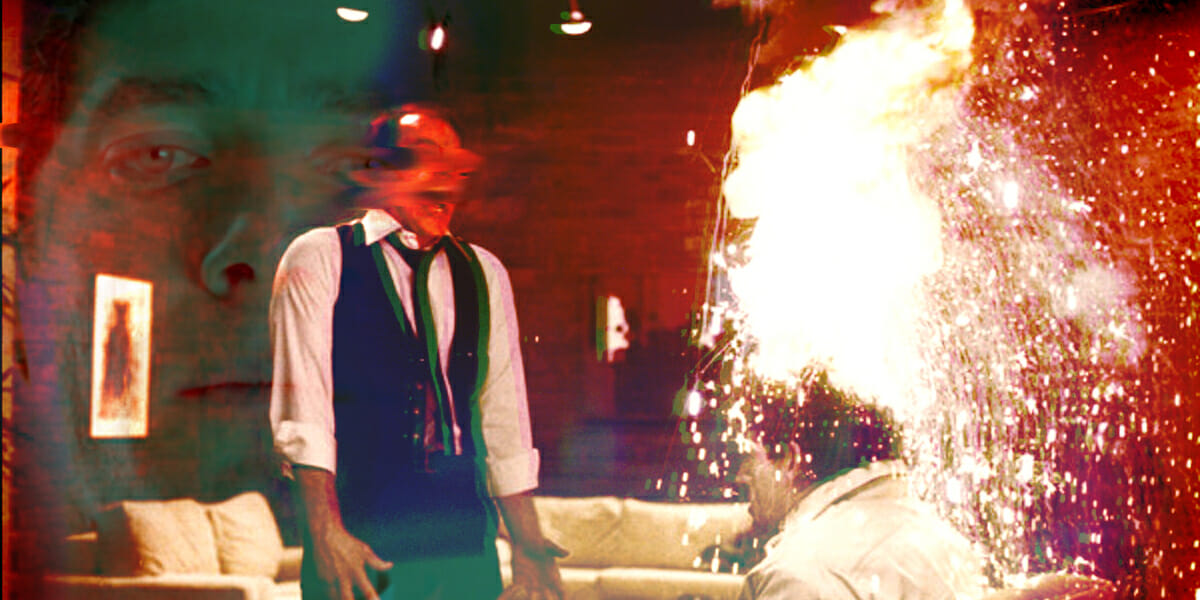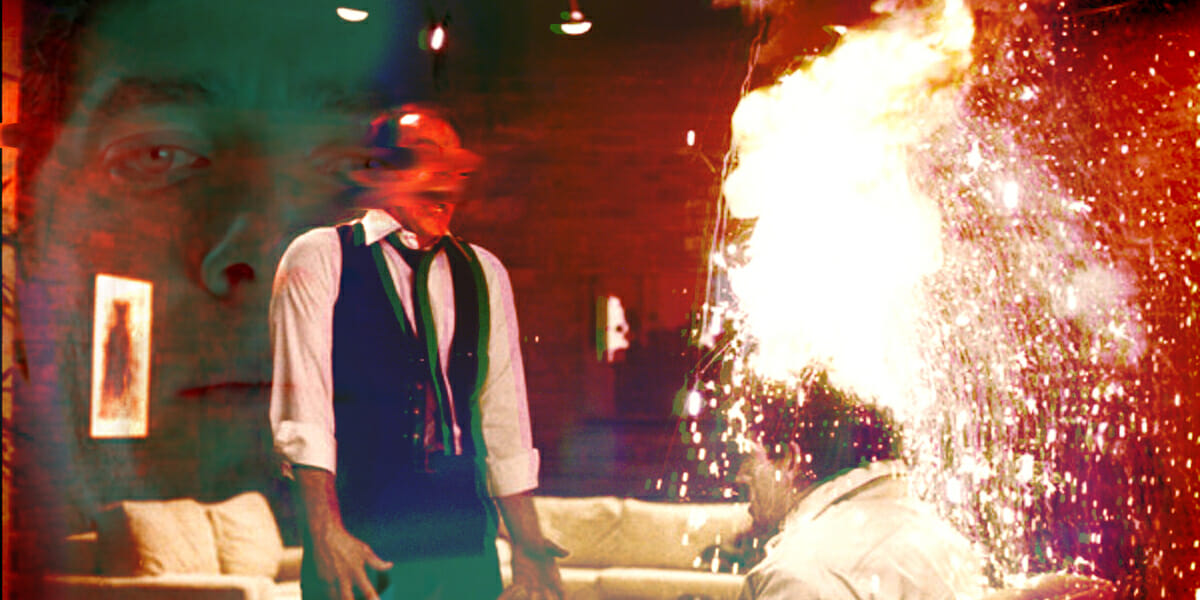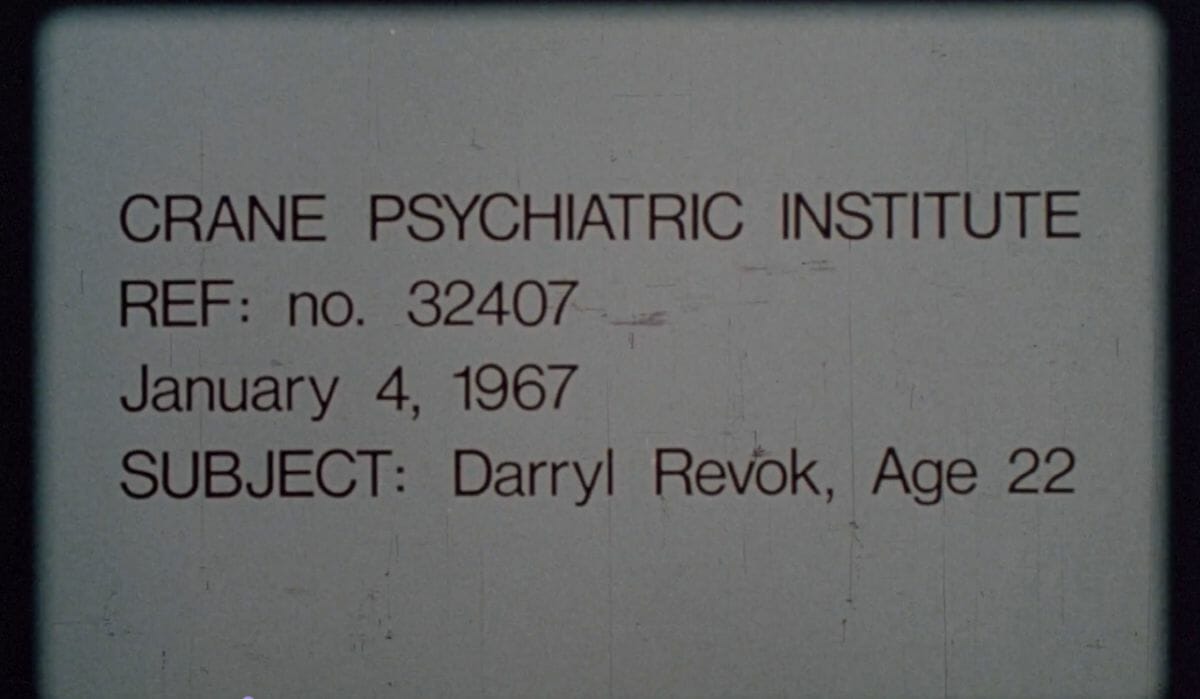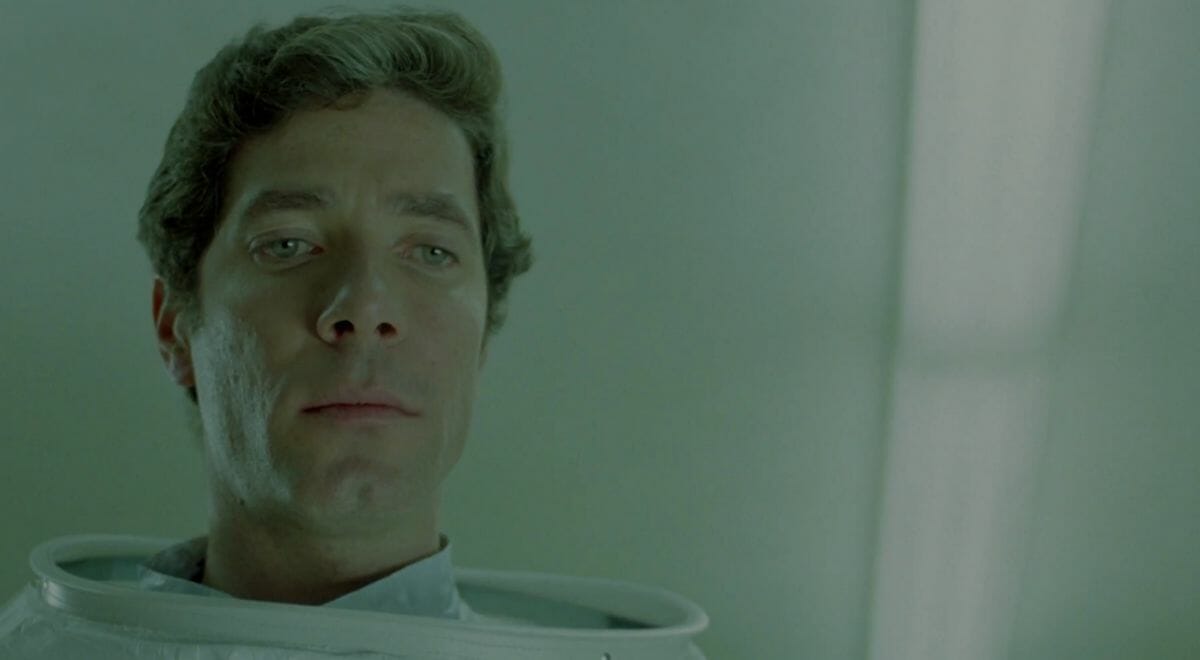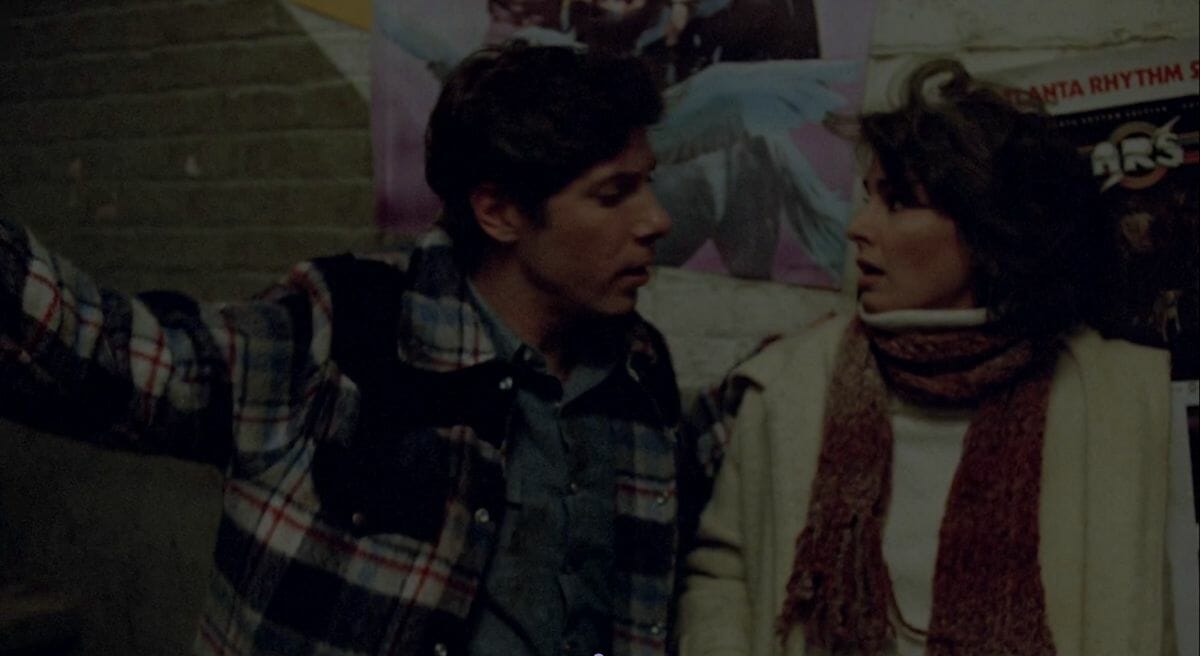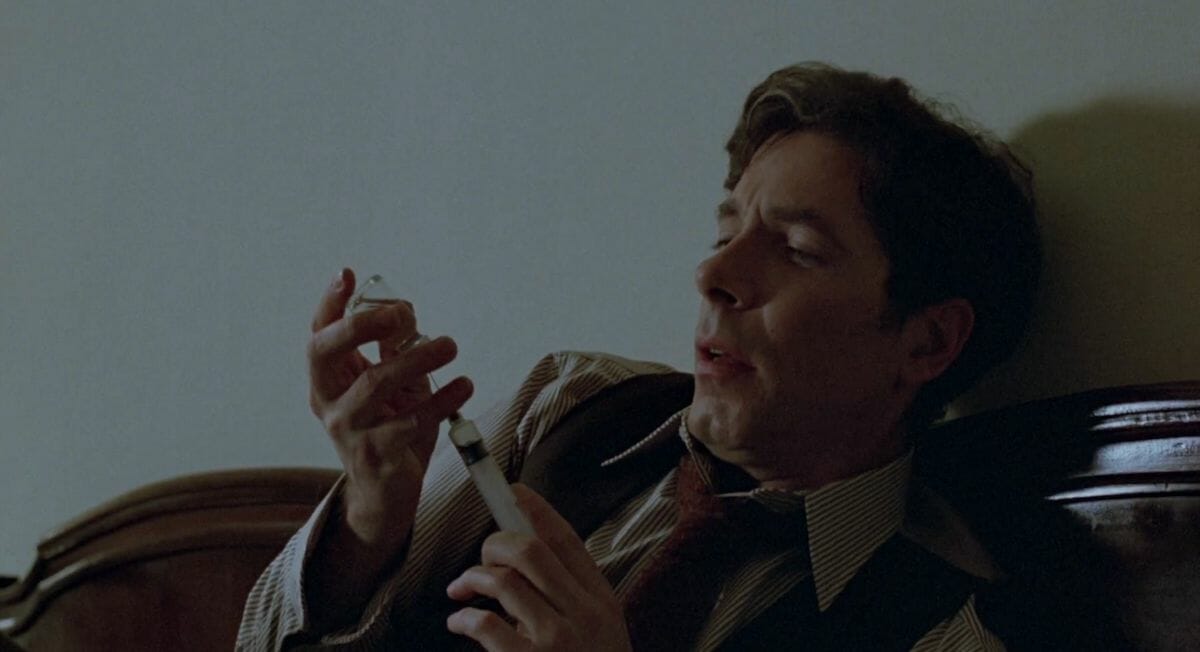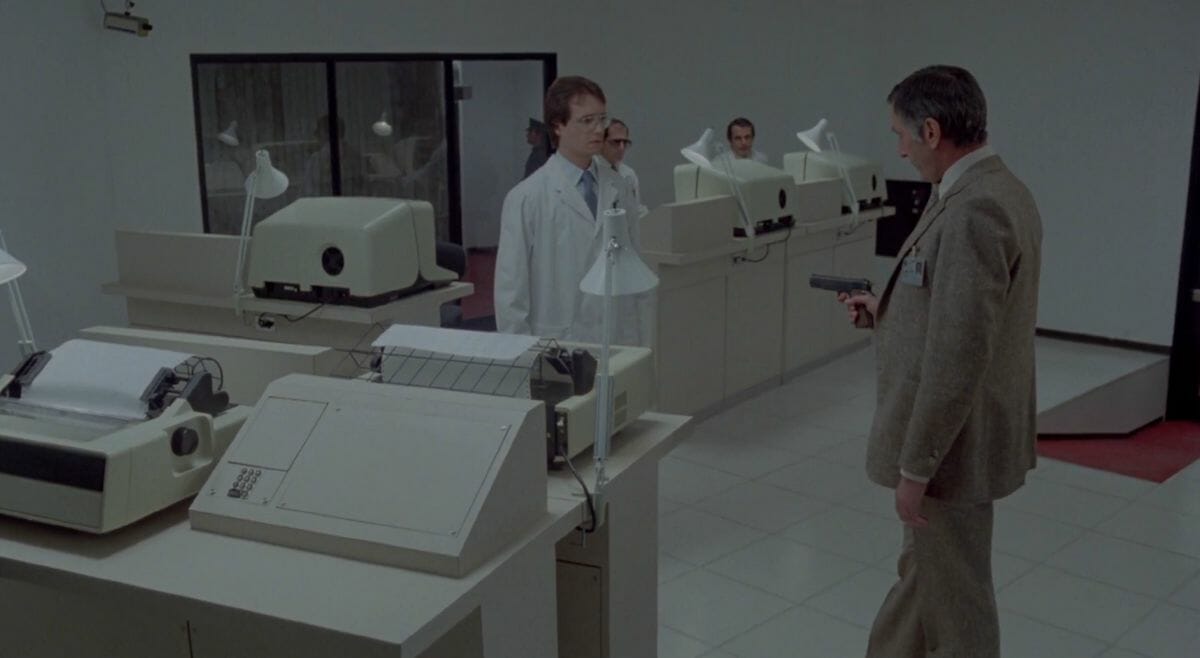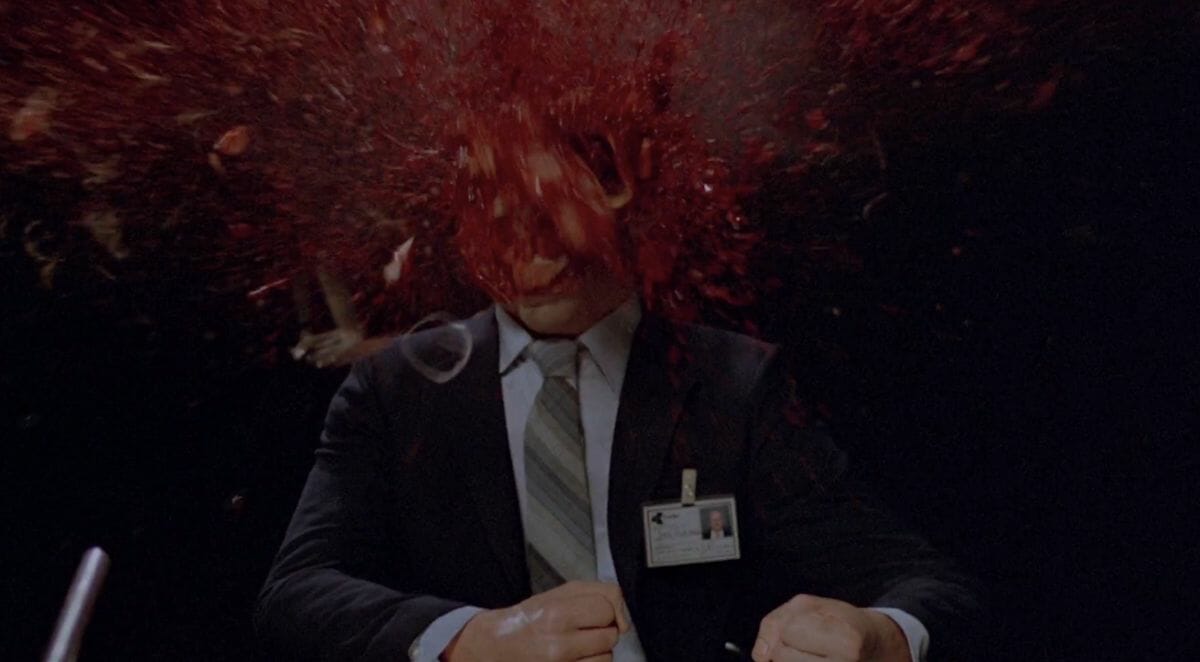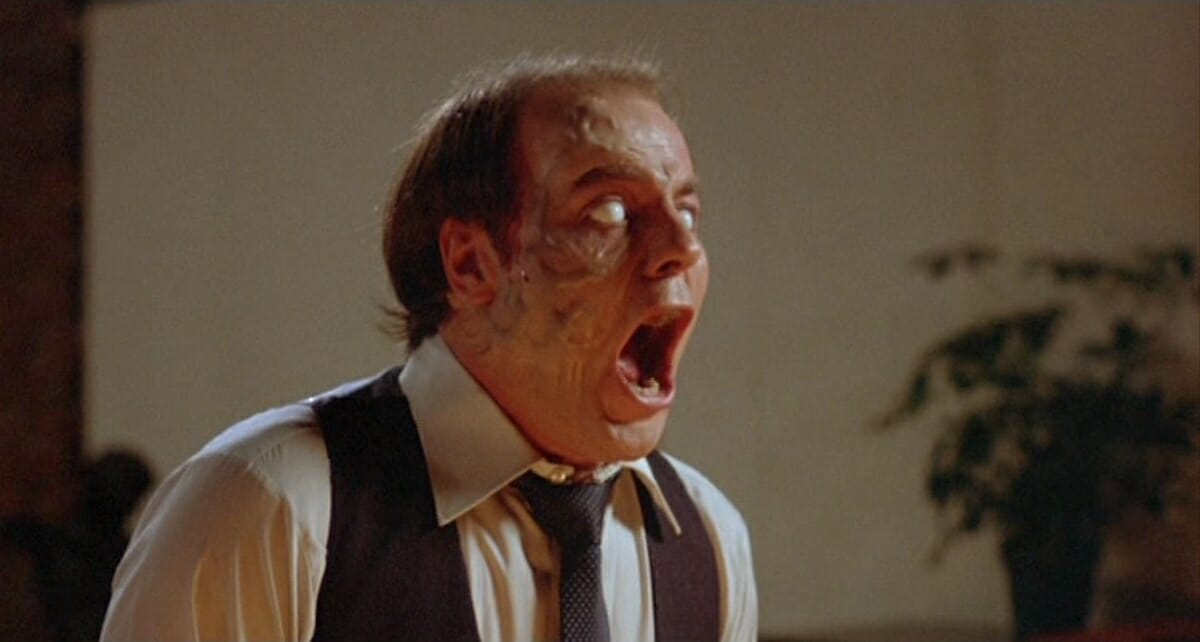Scanners is one of those movies that’s difficult to talk about in any unique contemporary sense; so many people have cut their teeth boasting about the movie’s explosive introduction, its menacing villain, and Cronenberg’s directing skills at their vintage best. In light of its 40th anniversary today, however, I’ve come to view this film from a new perspective. If one looks past the thrilling stunts and the masterful gore, we see a movie about ideas, the self, and its desire for connection — a desire that, even in this new age of interconnectedness, still rings true, especially now, when we’re forced to spend so much of our time away from physical relationships.
In this socially distanced era where the only real constant connectivity between people has been the internet, Scanners surprisingly has a lot to say about cultures that pervade online networks both big and small, and the very idea of “online culture” as a whole. Frankly, anyone who spends a lot of time online will find it pretty easy to draw parallels between their own experiences and the struggle at the core of Scanners’ world.
Scanners, for those not in the know, is a dark thriller about a small group of gifted people with the power to connect their brains into other “nervous systems separated by space,” as the movie defines it — the “scanners” of the movie’s title. More than just mind control, their power translates into something akin to a telepathy of the body used for some creative (and dangerous) purposes. While, many times, this phenomenon results in a rather explosive reaction, more often than not it’s represented onscreen by swelling, high pitched synth notes and actors’ heads shaking awkwardly while their nose bleeds.
The central plot follows Cameron Vale— played by the stoic, piercing, and stilted Stephen Lack — a loner abducted by a shadowy corporation, represented by Dr. Paul Ruth (The Prisoner’s Patrick McGoohan, no less). Ruth is a similarly stoic man who becomes a sort of father figure for Vale, informing him of his untapped power, and teaching him how to harness it with the help of a curious drug called Ephemerol, whose unexpected side effect is creating Scanners through exposure during pregnancy.
Ruth draws Vale into a shadow world of underground counter cultures and corporate espionage, where he is asked to stop Darryl Revok (Michael Ironside in great form), a leader hell bent on directing the other scanners and uniting them against the so-called “normals.” As Cameron follows the trail to Revok, the bodies keep piling up; almost every time Vale makes a physical connection to another scanner, it’s cut short by violence. Can Vale find the truth before Revok’s goons catch up to him?
This is the kind of movie where guns never run out of bullets, every car crash ends with an explosion, and the level of gore and violence is relentless, but there’s still a prominent message waiting to be uncovered in there relating to modern audiences. Scanners bears a striking similarity to today’s internet, despite the fact that the world wide web wouldn’t even become available to the public until ten years after this movie came out. With a story centering around invisible connections transmitting thoughts and ideas across great distances, furious battles between opposing sides, and shady corporations trying to control everything, Scanners could have been written today — and may have more to say to today’s audiences than those who saw the movie on its initial release.
Vale connects to a computer’s neural network in the film– something that, in 1981, would come across almost entirely as science fiction tech babble, but today rings not only more believable, but also as a commonly understood concept. We interact with dozens of digital neural networks everyday, after all. These algorithms do millions of small things behind the scenes of almost every app or website and, when we engage with the platform, we’re talking, in a sense, with the mind of a computer ourselves.
Computers, in their most contemporary form, exist with really only one purpose: to keep you watching, reading, or listening to something— a feature that on its surface seems benign, but when you add them all together or look at it on a grander scale seems dystopian. When you create an attachment like this to technology as a part of your life, it seems impossible not to see a change in outlook and behavior within the confines of reality. These connections, like in the film are usually a two way street, and can offer some unforeseen ramifications.
An example of this can be found in the scanners who refuse to align themselves with either Ironside’s Revok or with the status quo. The first scanner Vale in the movie meets is an artist, who secludes himself away in his workshop, and after that, he meets a small community of scanners living together. Why were these people important enough to visit in the story? Although they aren’t explored with any substantial depth, Cronenberg put these moments into this movie for a reason: these narratives offer something to hope for, in our reality, a third way, and bring a depth to the struggle between good and evil within the story, arguably offering a guide to finding meaningful connections online.
Watching Scanners in this context, it may be the artist who uses the creative process to assert himself within the sea of voices who becomes one of the most important figures in the movie— something that becomes especially poignant when remembering that, without the drug, our hero couldn’t even differentiate his own inner voice from the crowd of noise. Surely, that is a crystal clear analogy of what it means to create: forcing all of the very distinct ideas and voices into something uniquely you; the act of creating is putting yourself and your creative needs onto a pedestal however small, and saying what you think or feel matters.
In this way, the internet has been an unprecedented gateway of inspiration and growth in whatever art or craft someone could imagine for a number of years, offering a democratic space freed of traditional gatekeepers and, by giving people a platform to share their creations, elevating the best in us all. The artist’s story in Scanners also highlights the isolation of characters inside the film, portraying him as living alone in his created world, unable to be a part of society and shut away from outside voices and, therefore, any hope of real connection. In the contemporary world of today’s online experience, it’s hard not to draw a direct parallel to the isolationist feeling of refusing social media or digital connection.
The commune is the other example of what “neutral” scanners could look like: a small community, where scanners look after one another and create deep connections by linking their minds to one another — something that runs contrary to the idea promoted elsewhere in the movie that, in other environments, two scanners can’t even be in the same room as each other.
Almost anyone who’s spent any time on the internet since it’s widespread release has several stories about a great community they’ve been a part of, be it a fandom, a forum, a server in an MMO, or a following of YouTubers. As in the film, these moments of association and community may be temporary, but they can also be unexpectedly powerful and emotionally meaningful when they arrive. Finding a place on the internet where you can let your guard down can be hard, and you always miss it when it’s gone, but that connection can feel all-encompassingly necessary when everything else feels desolate.
The impact of found communities —or external voices online as a whole — can also be seen in the movie’s treatment of its central character. It would be a stretch to argue that Vale inherently has any grandiose opinions of himself, but the movie seems resolute in its desire to make the audience believe that he does… something that, unintentionally, maps to the ways in which our impressions of our online interactions can be distorted, even egotistical. No matter how much we and those around us bend over backwards to “prove” that we’re cool, connected, and engaged, we’re not nearly as put together or linked as we’re willing to pretend we are.
Like Vale, we can suffer personally from our ability to so easily connect, with online friendships often existing on a more superficial scale than those in physical space, acting for many as an echo chamber rather than a true relationship. As we spend more and more time online, it can become harder to build real face to face connections, or to see the world from other perspectives. It is, perhaps, ironic that in a time where we have access to more information and personal experiences, we also see a rise in such close mindedness and inaccessibility. In this respect, despite —or perhaps because of — Lack’s stilted performance as Cameron, it’s plausible, if not easy, for the audience to see a piece of themselves in this aspect of his story.
In addition to the struggle with the self, the world of Scanners features a more traditional, straightforward struggle: that of corporations trying to control a world they don’t understand that they, themselves, helped create. From a naive desire to help the world, Dr. Ruth created the drug Ephemerol, which had the unexpected side effect of creating Scanners through exposure during pregnancy. The doctor sells his formula and his soul to a massive defense corp called COMSEC that wants to control Scanners and use them as corporate spies, and that parallel is there in real life with massive corporations controlling each of the handfuls of social media platforms popular today.
These corporations don’t fully understand what they have or what they’re playing with, or at least that’s the way they describe it when mistakes are made. The corporation in Scanners seems to be just playing with fire. They don’t understand the danger of their creations, but they want to control them. They’re no real accountability from the top, only those caught in the crossfire. It’s remarkably easy to map that onto the behavior of social media companies in today’s real world.
Corporations aren’t the only shady figures fighting for control of the scanners’ future, however. Darryl Revok stands alone as a solitary antagonist to both the desire for control from the corporations and the desire for neutrality by the other scanner parties. Revok is almost a force of nature in this film, seemingly omnipresent as he doggedly pursues Cameron with a small army of converted scanner gunmen who seemingly appear without warning or preamble. This chaos probably seems the most relatable to anyone who spends any time in the comments section of any online forum. After all, Revok himself is a radical, and there are no shortages of radicals on the internet.
In the past, he struggled to block out the voices; going even so far as to drill a hole into his brain to silence the people — but he eventually learns to talk over them, belittling non-scanners, defensively calling them ‘normals’, and dividing the world into his in-group (scanners) and the out-group (everyone else). His actions betray his ideology though as he doesn’t actually care about the other scanners, instead killing any that disagree with him and uses the few that are loyal to him as pawns. (You may have picked up on that part though, with an introduction of his character in which he literally makes another scanner’s head explode; it’s hardly subtle).
Those who follow Revok are part of a one sided relationship similar to the parasocial relationships found all over social media between content creators and their followers. While these relationships remain unequal, they have a transformative effect on those caught in their wake — consider the impact of the mysterious, anonymous, QAnon in recent years. In the same way, Revok uses these followers as a weapon to pursue and attack Vale, separating him from any allies and driving him towards Revok.
That external voices — even helpful ones of friends, family, and friendly strangers — can feel daunting in the digital landscape sometimes is evidenced in the movie by Vale being plagued and distracted by constant thoughts of everyone around him at the beginning of the film. It’s the ideal analog for the experience of being encircled by voices shouting over one another for every moment we’re online, each one fighting for our attention until, as Revok memorably puts it, “there’s no more room left for Darryl.” Everyone has a podcast, a Twitter or a TikTok; we’re all trying so hard to be seen and heard, all trying to be special, but ultimately ending up part of a murmur that distracts and undermines that connection they’re looking for.
Most people spend about 11 hours a day on some sort of screen, with it becoming harder to disconnect and just listen to our own voices. For many people, being connected constantly has become something close to a requirement, with that interrelation affecting our brain on a neurological level. Just as Dr. Ruth’s Ephemerol created a neural divergence in children in the fictional world of Scanners, the internet rewires our brains in unprecedented ways. To those in the not too distant past, accessing this vast information network would seem like a super power.
The world of Scanners and the internet both share their portion of pitfalls and shortcomings, but they also have space for huge potential. Humans are social animals, and we crave relationships with one another. Like Vale, we must be careful about who we trust and connect with, but we also need to be open to new experiences. No matter how you’d like to interpret Scanners, It has earned its place among the pantheon of cult classics, and it’s still just as surprising a hit as it was 40 years ago. I highly recommend adding it to your queue in honor of the anniversary.
